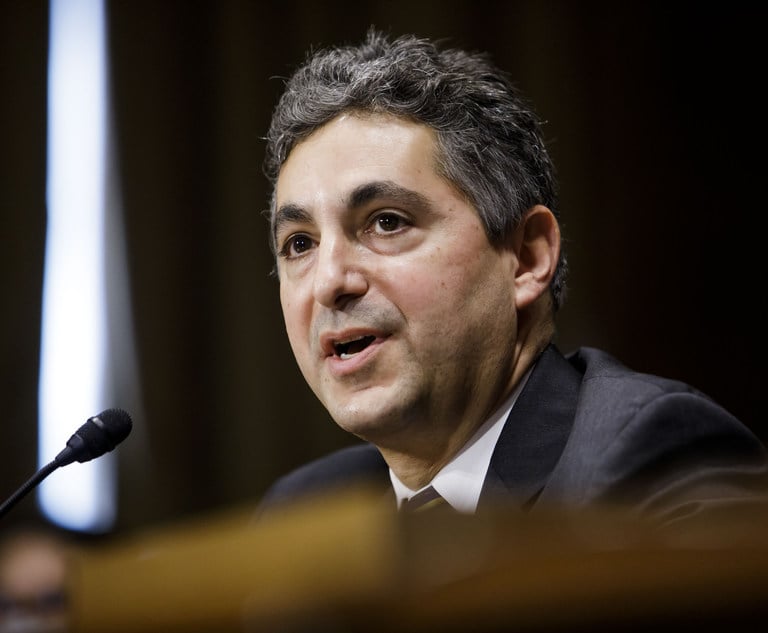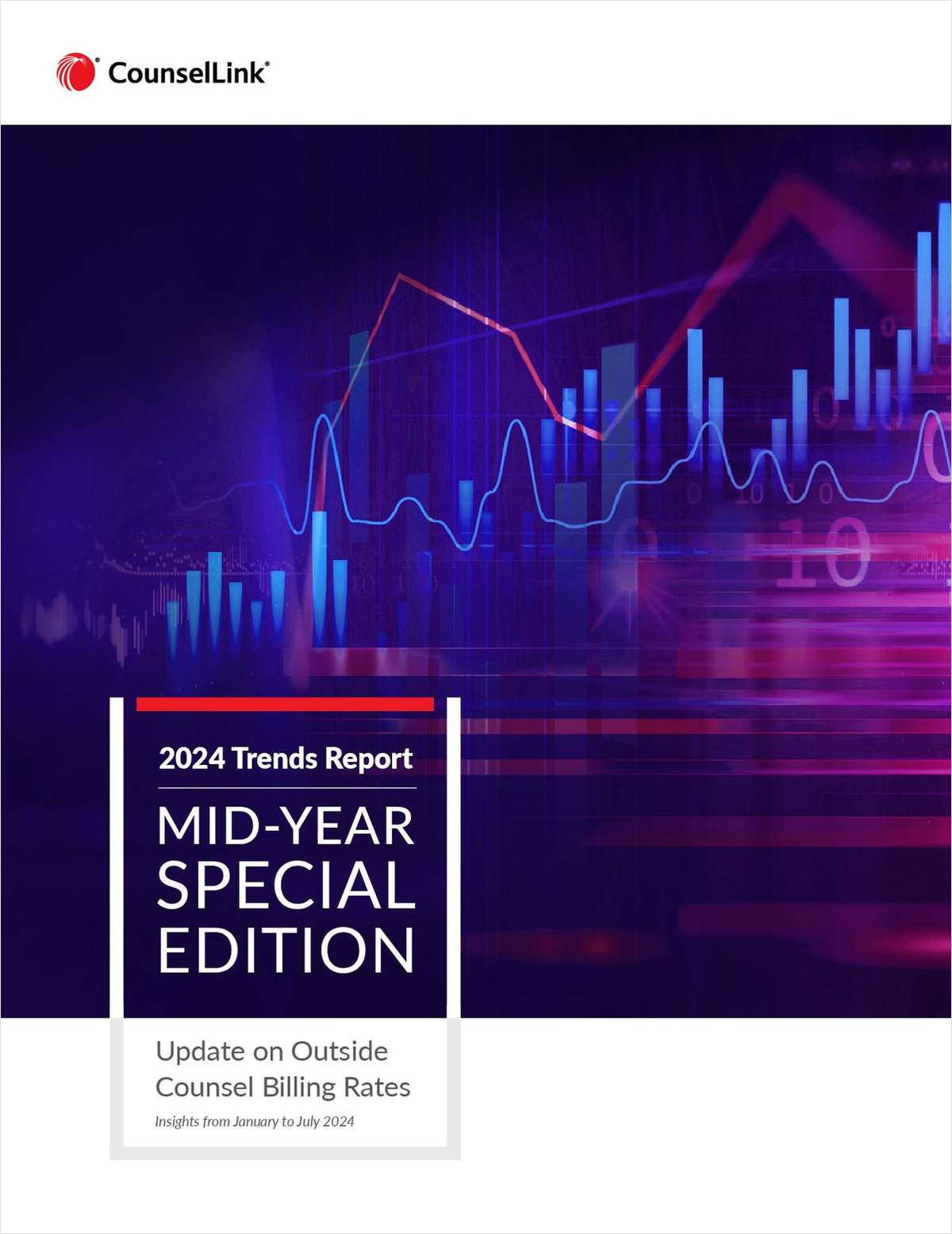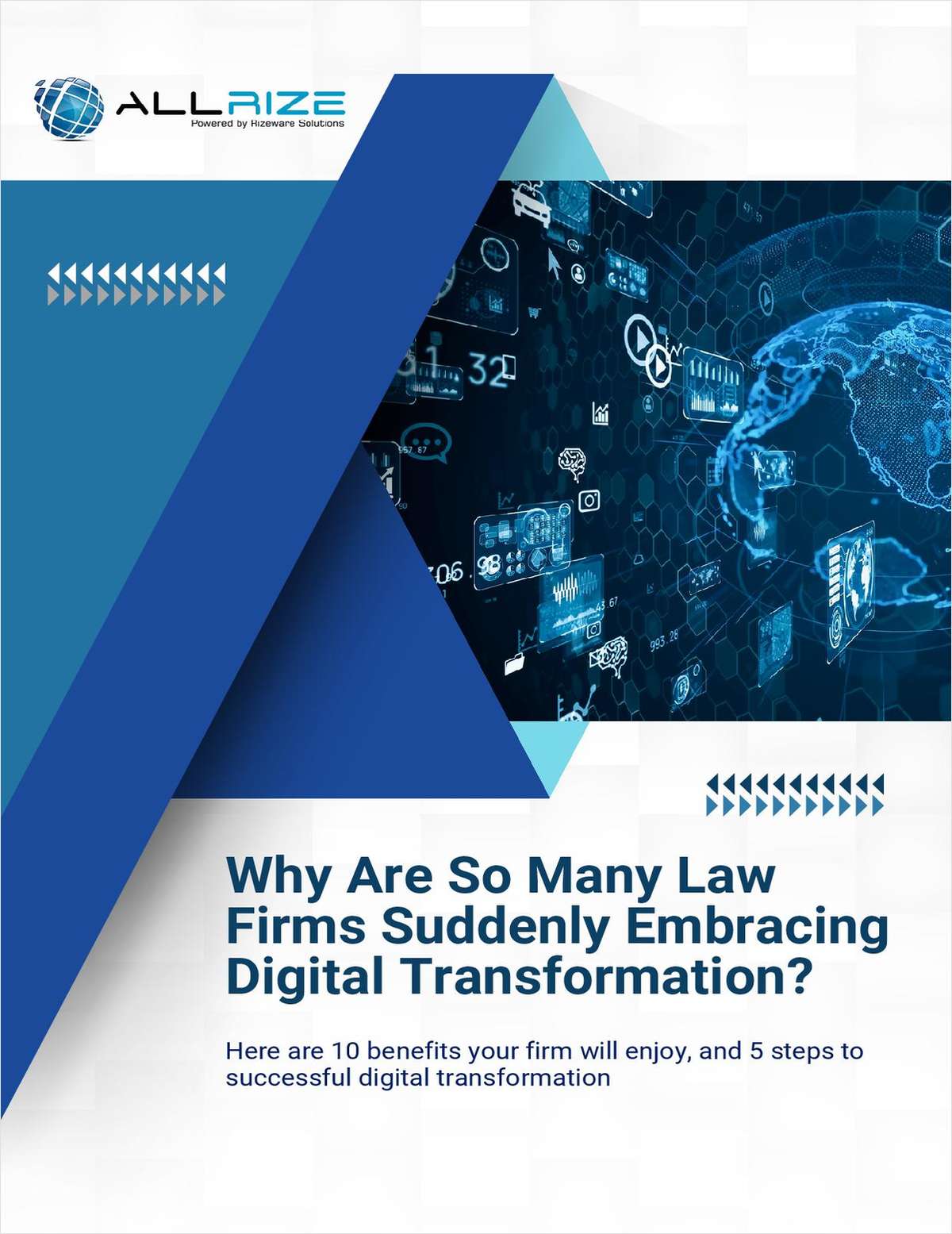 Thomas Goldstein.
Thomas Goldstein.Skilled in the Art: Qualcomm Kicks Off Antitrust Appeal + Don't Count on that $2.5 Billion, Idenix + More Thoughts on the Federal Circuit's Patent Eligibility Debate
Qualcomm has fired its first shot at the FTC in the Ninth Circuit.
July 10, 2019 at 01:20 PM
11 minute read
Welcome to Skilled in the Art. I'm Law.com IP reporter Scott Graham. It's been a busy week on the IP front, so let's get right to it. Qualcomm has fired its first shot at the FTC in the Ninth Circuit, Idenix looks to have an uphill battle for rescuing its $2.5 billion jury verdict against Gilead Sciences, and I've got a few parting thoughts on the Federal Circuit's latest cri de coeur on patent eligibility. As always, you are welcome to email me your own thoughts and follow me on Twitter.
 Thomas Goldstein.
Thomas Goldstein.Two days after U.S. District Judge Lucy Koh unleashed her 233-page antitrust order on Qualcomm, I wrote that the “irresistible force of its appellate lawyers will face the immovable object of Koh's detailed factual findings.”
That contest is now formally under way at the Ninth Circuit, where Qualcomm has asked the court's motions panel to stay her injunction pending an expedited appeal. Along with counsel from Cravath, Quinn Emanuel, Keker and Morgan Lewis, Qualcomm has now added appellate specialist Tom Goldstein as counsel of record.
Goldstein, of Goldstein & Russell and SCOTUSblog, is well known for his Supreme Court advocacy, so maybe Qualcomm already is looking beyond the Ninth Circuit. I had a rundown on the company's motion earlier today on The Recorder.
Something I didn't get into in that story: It's been interesting to watch the evolution of DOJ antitrust chief Makan Delrahim in this case over the last six months. Until May, DOJ had stayed planted on the sidelines while one of the most consequential antitrust cases of the decade unfolded in San Jose federal court.
After the trial was over but before Koh ruled, DOJ filed a statement of interest asking Koh for an additional hearing before imposing any remedies. She declined. Delrahim did not appear on that filing, though his deputies at the antitrust division did. That fueled speculation that Delrahim was recused due to having lobbied for Qualcomm while in private practice.
Once Koh issued her May 21 decision shredding Qualcomm, Delrahim did step forward—but in the derivative consumer class action against Qualcomm, which is also pending at the Ninth Circuit.
In the meantime, he delivered a talk on IP and antitrust in Paris on June 6.Although he didn't mention the FTC case by name, he did say that “an antitrust cause of action premised on a failure to abide by FRAND commitments would be inconsistent with Section 2 of the Sherman Act. That is because there is no duty under U.S. antitrust law for a holder of an intellectual property right to license on FRAND terms, even after having committed to do so,” according to his prepared remarks.
Qualcomm quoted from that talk in its brief to the Ninth Circuit, saying Delrahim had labeled Koh's theory of an antitrust duty to deal a “misuse of the antitrust laws.”
 Orrick's Josh Rosenkranz
Orrick's Josh Rosenkranz$2.5 Billion Idenix Verdict: Going, Going …
I've haven't had time to listen to all of today's Federal Circuit argument over a $2.5 billion verdict won by Idenix Pharmaceuticals and Merck & Co. against Gilead Sciences, but then thrown out by U.S. District Judge Leonard Stark for lack of enablement.
But I've heard enough to conclude that Gilead and its Orrick, Herrington & Sutcliffe counsel are very likely to prevail.
To recap, a jury found that Idenix's 7,608,597 patent on the use of 2' methyl-up modified nucleosides to treat hepatitis C pointed Gilead's predecessor to the compound it ultimately called sofosbuvir, entitling it to 10% of Gilead's sales. But Stark ruled that Idenix's patent described at least thousands of compounds, possibly even billions. It would not have enabled a person of skill in the art to identify sofosbuvir, whose structure is 2' methyl-up 2' fluoro down, without undue experimentation.
First off, the draw for Tuesday's panel favored Gilead in a big way. Chief Judge Sharon Prost and Judge Pauline Newman returned after ruling for Gilead on a similar issue—albeit in the patent interference context—in 2017.
Prost immediately tried to pin down Idenix's counsel, Jones Day partner Greg Castanias, on just how many nucleosides Idenix's patent potentially described. Castanias politely but persistently avoided answering directly, pointing out that it was Gilead's burden to prove lack of enablement by clear and convincing evidence.
Prost tried to help. Stark “started at billions and whittled down to tens of thousands,” she said.
The judge “said it was unclear,” Castanias answered.
“But he said it was unclear as to whether it was a lot more than [thousands], not a lot less than that,” said Judge Evan Wallach. “That's important.” Orrick partner Josh Rosenkranz promised a big reveal when it was his turn to argue. “Let me go straight to the numbers, because that's where the court's questions were,” he said.
Rosenkranz didn't recite any actual numbers, though. Instead, he said it was undisputed that Idenix's universe of 2-prime-methyl-up nucleosides is “vast,” and that only “a small portion” would actually work at fighting HCV.
No matter, though. Rosenkranz faced far fewer interruptions than Castasnias. About the only pushback came from Judge Newman, who posited that Idenix described a “highly specific molecule with thousands of variations. And why isn't it routine just to give a robot the job” of screening them?
Rosenkranz said that with billions of possible variations, “it would take forever to test each one of them. And then to your point, you would never actually test 2-prime-methyl-fluoro because the spec points in the other direction.”
“I think that is the strongest argument,” Newman agreed. “In only some of the examples do they mention fluoro.”
|
More Thoughts on CAFC Diagnostics Opinions
I'm still not sure what to call what we had at the Federal Circuit last week in the Athena Diagnostics patent eligibility case. Was it an intervention? A cry for help? A series of (meticulously constructed) rants?
As I wrote Monday, all 12 active judges agreed that the Supreme Court is flat-out wrong when it comes to patent eligibility and medical diagnostics. Five judges wanted to take Athena Diagnostics v. Mayo Collaborative Services en banc to salvage diagnostics claims that aren't overly broad. Seven others said it simply can't be done under the Supreme Court's 2012 eligibility decision, Prometheus Laboratories v. Mayo Collaborative Services. It took eight separate opinions to explain this.
There's every reason to believe this will get the Supreme Court's attention. After all, a 5-5 split in CLS Bank v. Alice led to the Supreme Court granting cert in 2013—though it ultimately used the case to double-down on the Mayo framework. And after three Federal Circuit judges called for en banc review of the court's Berkheimereligibility decision last year, the high court at least has asked for the solicitor general's views on cert.
I reported snippets of each Athena opinion Monday, but here are a few other highlights I didn't have room to mention:
BIO, PhRMA and two other amici curiae laid the blame at the Federal Circuit's feet, arguing in an amicus brief supporting rehearing that “the divergence in this court's post-Mayo jurisprudence” and lack of “cohesive guidance” has called numerous biotech patents into doubt.
That didn't sit well with Judge Alan Lourie. “Our cases are consistent,” he wrote while concurring in the denial of en banc review. “They have distinguished between new method of treatment claims and unconventional laboratory techniques, on the one hand, and, on the other hand, diagnostic methods that consist of routine steps to observe the operation of a natural law, a clear line. Beyond that, I do not see a way clear to distinguish Mayo in a useful, principled, fashion.
“Software is another matter,” he conceded, “but such patents are not before us here.”
Judge Timothy Dyk, also concurring, wanted to make clear that he is actually a fan of the Supreme Court's patent eligibility case law in general. “The Mayo/Alice framework has thus proven to be both valuable and effective at invalidating overly broad, non-inventive claims that would effectively 'grant a monopoly over an abstract idea,'“ he wrote, citing Alice and Bilski. Contrary to popular opinion, the doctrines of novelty, obviousness, enablement and written description “cannot adequately guard against the dangers of overclaiming.”
But Mayo's overbreadth may be causing legitimate diagnostics patents to lose their eligibility, Dyk wrote. It would be “desirable for the Supreme Court to refine the Mayo framework to allow for sufficiently specific diagnostic patent claims with proven utility,” he wrote.
Notably, Judges Todd Hughes and Raymond Chen joined the portion of Dyk's opinion suggesting that Mayo could be narrowed. Neither they nor any other member of the court joined the portion extolling the benefits of the Alice-Mayoframework.
Chen helped litigate Bilski for the PTO as its solicitor and contributed to the U.S. government's amicus brief in Mayo. On Wednesday he seemed to offer a history lesson for the high court's newer justices, explaining that 1981's Diamond v. Diehrwas perceived as “the settled precedent on Section 101 for three decades” before the “more far-reaching, aggressive version” came along in the form of Mayo.
Chen also described what's at stake in easy-to-understand terms: incentivizing “the risky, expensive, unpredictable technical research and development that people would not otherwise pursue in the hope that if they discover something of great medical value, then they will be protected and rewarded for that successful effort with a patent.
“This category of invention, after all, is not the same as methods of entering into contracts, or horse whispering, or speed dating or other methods that animated many of the concerns underlying Bilski,” Chen wrote, alluding to oral arguments in that case.
Judge Kimberly Moore, the primary dissenter from denial of en banc review, reminded the justices which way the winds are blowing in Congress. “In his opening statement during The State of Patent Eligibility in America Senate hearings, Senator [Chris] Coons recognized that 'for medical diagnostics, . . . [there is] a presumption against eligibility that is nearly impossible to overcome,'” Moore noted.
Moore seemed to be speaking not only to Sens. Coons and Thom Tillis, the leaders of Senate Judiciary's IP Subcommittee, but also to Sen. Richard Blumenthal, who's been lurking around the hearings to ask about the effect of stronger patents on pharmaceutical prices.
“The diagnostic industry drives medical costs down, not up,” Moore wrote. “People suffering from illness or disease will do whatever they can to find a cure. Proper diagnoses allow for earlier detection of illness and targeted treatment. But without proper diagnosis, patients have to endure numerous unsuccessful and costly treatments.”
Judge Kara Stoll, meanwhile, is sympathetic with the amici critics that rankled Judge Lourie. “At the very least,” she wrote, “en banc review would help the court develop an articulable standard for its Section 101 jurisprudence moving forward.”
Judge Kathleen O'Malley, finally, went fully Bernie Sanders, calling for a revolution against the Supreme Court's ultra vires patent eligibility case law. “I believe that confusion and disagreements over patent eligibility have been engendered by the fact that the Supreme Court has ignored Congress's direction to the courts to apply 35 U.S.C. sections 101, et seq (“Patent Act”) as written,” she wrote.
Congress deliberately removed the concept of “inventiveness” from Section 101 in 1952. But now the Supreme Court has revived it in Mayo “and continues to apply it despite express abrogation.”
I expect to hear Judge O'Malley's opinion quoted frequently in future Senate IP Subcommittee hearings.
|
Ladies and Gentleman of the Jury, We Just Got Acquired
I was interested to read today about Cisco Systems' announcement that it intends to buy Acacia Communications for $2.6 billion cash.
Acacia is in the home stretch of a licensing and trade secret trial with Viasat Inc.in California state court. Viasat is asking for $47 million in unpaid royalties and late fees over fiber optic technology, plus $289 million for trade secret misappropriation.
My initial reaction is that if Viasat recovers only its contract claims, that's an amount that Cisco can pretty easily swallow and chalk up to its predecessor. If Viasat prevails on its trade secret claims, then we can expect some of Cisco's blue chip lawyers to come swooping in for an appeal.
What do you all think?
Skilled in the Art will be on hiatus Friday, so I will see you all again at this time Tuesday.
This content has been archived. It is available through our partners, LexisNexis® and Bloomberg Law.
To view this content, please continue to their sites.
Not a Lexis Subscriber?
Subscribe Now
Not a Bloomberg Law Subscriber?
Subscribe Now
NOT FOR REPRINT
© 2024 ALM Global, LLC, All Rights Reserved. Request academic re-use from www.copyright.com. All other uses, submit a request to [email protected]. For more information visit Asset & Logo Licensing.
You Might Like
View All
Skilled in the Art With Scott Graham: I'm So Glad We Had This Time Together

Design Patent Appeal Splinters Federal Circuit Panel + Susman Scores $163M Jury Verdict + Finnegan Protects Under Armour's House
Trending Stories
Who Got The Work
Dechert partners Andrew J. Levander, Angela M. Liu and Neil A. Steiner have stepped in to defend Arbor Realty Trust and certain executives in a pending securities class action. The complaint, filed July 31 in New York Eastern District Court by Levi & Korsinsky, contends that the defendants concealed a 'toxic' mobile home portfolio, vastly overstated collateral in regards to the company's loans and failed to disclose an investigation of the company by the FBI. The case, assigned to U.S. District Judge Pamela K. Chen, is 1:24-cv-05347, Martin v. Arbor Realty Trust, Inc. et al.
Who Got The Work
Arthur G. Jakoby, Ryan Feeney and Maxim M.L. Nowak from Herrick Feinstein have stepped in to defend Charles Dilluvio and Seacor Capital in a pending securities lawsuit. The complaint, filed Sept. 30 in New York Southern District Court by the Securities and Exchange Commission, accuses the defendants of using consulting agreements, attorney opinion letters and other mechanisms to skirt regulations limiting stock sales by affiliate companies and allowing the defendants to unlawfully profit from sales of Enzolytics stock. The case, assigned to U.S. District Judge Andrew L. Carter Jr., is 1:24-cv-07362, Securities and Exchange Commission v. Zhabilov et al.
Who Got The Work
Clark Hill members Vincent Roskovensky and Kevin B. Watson have entered appearances for Architectural Steel and Associated Products in a pending environmental lawsuit. The complaint, filed Aug. 27 in Pennsylvania Eastern District Court by Brodsky & Smith on behalf of Hung Trinh, accuses the defendant of discharging polluted stormwater from its steel facility without a permit in violation of the Clean Water Act. The case, assigned to U.S. District Judge Gerald J. Pappert, is 2:24-cv-04490, Trinh v. Architectural Steel And Associated Products, Inc.
Who Got The Work
Michael R. Yellin of Cole Schotz has entered an appearance for S2 d/b/a the Shoe Surgeon, Dominic Chambrone a/k/a Dominic Ciambrone and other defendants in a pending trademark infringement lawsuit. The case, filed July 15 in New York Southern District Court by DLA Piper on behalf of Nike, seeks to enjoin Ciambrone and the other defendants in their attempts to build an 'entire multifaceted' retail empire through their unauthorized use of Nike’s trademark rights. The case, assigned to U.S. District Judge Naomi Reice Buchwald, is 1:24-cv-05307, Nike Inc. v. S2, Inc. et al.
Who Got The Work
Sullivan & Cromwell partner Adam S. Paris has entered an appearance for Orthofix Medical in a pending securities class action arising from a proposed acquisition of SeaSpine by Orthofix. The suit, filed Sept. 6 in California Southern District Court, by Girard Sharp and the Hall Firm, contends that the offering materials and related oral communications contained untrue statements of material fact. According to the complaint, the defendants made a series of misrepresentations about Orthofix’s disclosure controls and internal controls over financial reporting and ethical compliance. The case, assigned to U.S. District Judge Linda Lopez, is 3:24-cv-01593, O'Hara v. Orthofix Medical Inc. et al.
Featured Firms
Law Offices of Gary Martin Hays & Associates, P.C.
(470) 294-1674
Law Offices of Mark E. Salomone
(857) 444-6468
Smith & Hassler
(713) 739-1250










